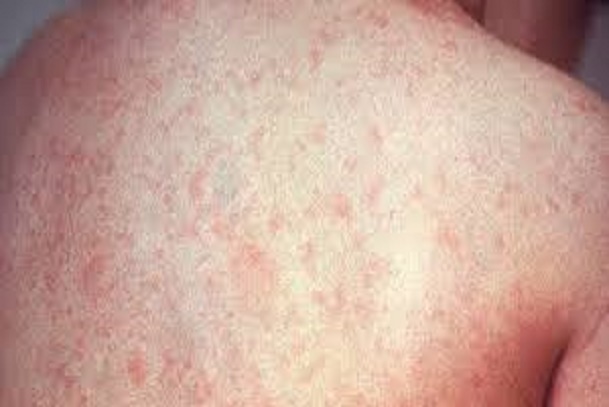 Wash your hands regularly and wear a face mask.
Learn more
Wash your hands regularly and wear a face mask.
Learn more

Rubella, also known as the German measles or 3 days measles, is a contagious disease that affects children mostly through their skin and lymph nodes. It is caused by a virus known as ‘rubella’. This disease is not the same as measles (rubeola), though the two illnesses do share some characteristics, including the red rash. However, rubella is caused by a different virus than measles, and is neither as infectious nor usually as severe as measles.
Rubella spreads when people breathe in virus-infected fluid, such as the droplets sprayed into the air when a person with rubella sneezes or coughs, or share food or drink with someone who's infected. People who catch the virus are contagious for up to a week before and a week after the rash appears. Some people don't know they're infected because they don't have symptoms, but they can still pass the virus on to others.
It also can pass through a pregnant woman's bloodstream to infect her unborn child; thus becoming a dangerous health threat to the unborn child. Therefore, the best way to protect oneself and children from infection is to get vaccinated with the measles, mumps, and rubella (MMR) vaccine.
Before a vaccine against rubella became available in 1969, rubella epidemics happened every 6 - 9 years, usually among kids 5 to 9 years old, along with many cases of congenital rubella. Thanks to immunization, there are far fewer cases of rubella and congenital rubella. Yet it still spreads in Asia, Africa, and other parts of the world.
Complications of Rubella
Rubella is a mild infection. Once an individual have had the disease, they are usually permanently immune. Some women with rubella experience arthritis in the fingers, wrists and knees, which generally lasts for about one month. In rare cases, rubella can cause an ear infection (otitis media) or inflammation of the brain (encephalitis).
However, if a woman is pregnant and she contracts rubella, the consequences for the unborn child may be severe, and in some cases, fatal. Up to 80 percent of infants born to mothers who had rubella during the first 12 weeks of pregnancy develop congenital rubella syndrome. This syndrome can cause one or more problems, including:
The highest risk to the fetus is during the first trimester, but exposure later in pregnancy also is dangerous.
Rubella (German measles) Versus Rubeola (Measles)
Rubella is sometimes known as "three-day measles," as symptoms can be similar, but the symptoms of rubella are milder than those of measles.
[Next on German Measles: Prevention of Rubella and Congenital Rubella]